Carrots, planting and caring in the open ground for which require the implementation of certain agricultural measures, is a small-seeded crop from the Umbrella family. A native of Afghanistan, where the largest number of root crops still grows today, came to Europe in the X-XIII centuries.
Material Content:
Types and varieties of carrots
The variety of the genus is divided into 2 varieties - wild and sowing carrots, used in the agricultural sector. Cultured carrots, in turn, include 2 types of varieties - feed and table.
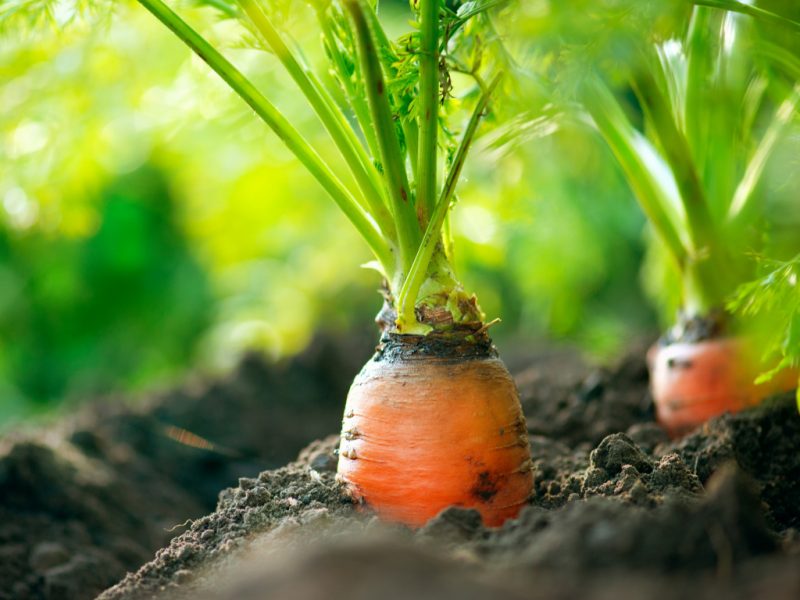
Among the most popular varieties that breeders are constantly working on, the following stand out:
- "Alyonka" is an early variety with a maturity of 50 days after emergence. Orange root crops up to 15 cm long have an average weight of around 145 g.
- "Tushon" - an early ripe variety that is used as food 60-65 days after emergence. The mass of the root crop is 150 g with a length of 20 cm.
- "Nantes" is a mid-season variety represented by cylindrical blunt-root root crops weighing up to 165 g, which are suitable for both food and storage.
- "Vitamin" - a characteristic feature of root crops of this mid-season variety is a high concentration of carotene, good taste, does not crack.
- “Queen of Autumn” is a mid-season variety whose root crops are excellent for long-term storage.
- Flacca is a mid-season variety that demonstrates excellent yields even on heavy soil.
- Mo is a late-ripening variety, characterized by good harvests that are stored throughout the winter. Great taste and juiciness.
Carrots: cultivation features
Carrots are not afraid of the cold, but cannot stand the shade.

When cultivating a representative of umbellate, it is worth considering such features:
- flat terrain on the site;
- soil composition;
- depth of digging of beds;
- bright lighting;
- plentiful watering;
- crop rotation compliance;
- timely protective measures.
Sowing seeds in open ground
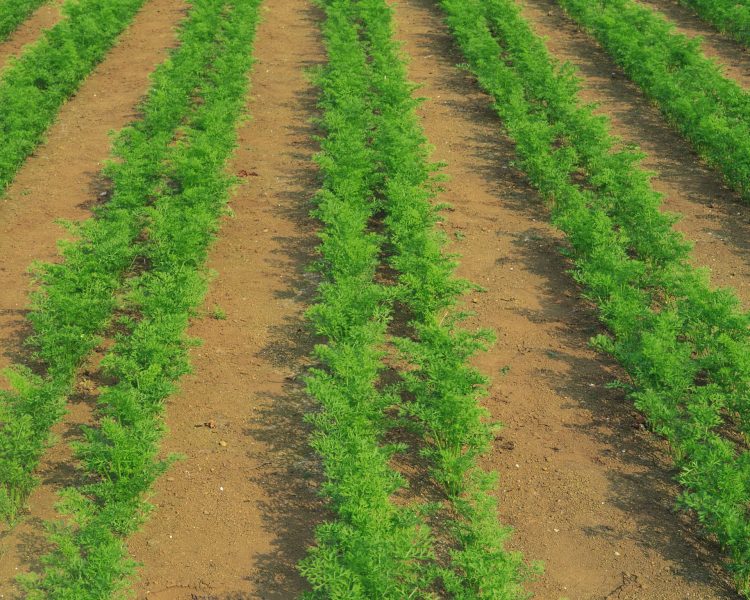
To get a good crop, before you start sowing seeds on garden beds, you need to study the agricultural technology of cultivating the crop, starting from the initial stage - sowing.
Choosing a place and preparing beds
Carrots show the best yield in flat, well-lit areas, where solanaceous (tomatoes, potatoes), pumpkin (cucumbers, zucchini) cultures were cultivated last year, as well as garlic, onions and cabbage. If small-seeded crops (dill, fennel, carrots) grew on the site, then you should not opt for it because of the poverty of the soil and the risk of infection by specialized harmful organisms that have accumulated in the soil. The root crop reaches its maximum size on light, loose soils with a good fertile layer.
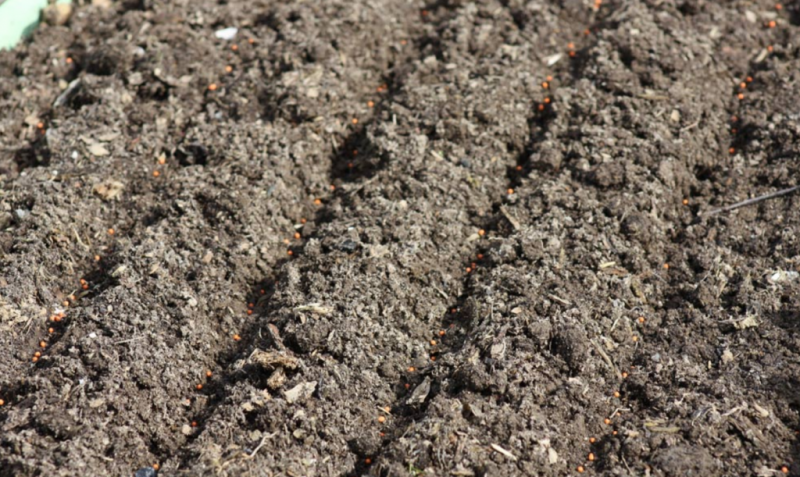
Soil is being prepared for spring sowing in the fall season:
- The selected area is dug up to a depth of 30 cm.
- Under digging, fertilizers are introduced in the form of 15 g of superphosphate, 15 g of potassium sulfate, 20 g of ammonium nitrate and 2-3 kg of humus per 1 m².
- With the advent of spring, the plot is harrowed with a rake.
Attention! If you dig only the surface soil layer (up to 20 cm), then the root crops will grow crooked, ugly.
How and when to sow?
Planting carrots in the spring is carried out in mid-April, when the earth warms up to 4-6 ° C.
However, depending on the characteristics of the site and the selected variety, the timing may vary:
- Mid-season and late varieties are sown from late April to May 10.
- On light soils, sowing is permissible until the end of the spring season.
- In the southern regions, where the land is warming up earlier, sowing of seeds in open ground can be carried out in the second half of March.
It is known that good seeds are the key to a high yield.
To get healthy seedlings, you must adhere to the following sowing algorithm:
- The seeds are wrapped in a cloth and placed in water heated to 50 ° C for 20 minutes, after which they cool for several minutes in the cold.
- Grooves are prepared with a depth of 2 cm with a distance of 30 cm.
- The distance between the seeds is kept within 2-3 cm.
- After seeding, the beds are mulched to prevent crusting.
The procedure for preparing seeds can be simplified: they are buried in a dense tissue in damp, cold soil 10 days before sowing.
On a note! Carrot is a cold-resistant crop and easily tolerates frosts down to -4 ° C.
Planting carrots in autumn, before winter
Winter sowing, which makes it possible to harvest 14 days earlier than usual, is permissible only for early varieties, and is carried out in light soil at the end of October according to the following scheme:
- 20 days before sowing, the soil is prepared.
- After sowing, the beds are mulched with a peat layer 3 cm thick.
- With the advent of spring, a film is stretched over the site, which is removed when shoots appear.
Carrots: care in the open field and proper watering

Successful cultivation of a vitamin-rich root crop involves the implementation of certain care measures.
Thinning and loosening
In dense sowing after the seedlings form one pair of true leaflets, thinning is carried out, as a result of which an interval of 2-3 cm should be obtained between the specimens. The second time the crops are thinned after the formation of two pairs of leaves. The result of the procedure is the distance between seedlings of 4-6 cm.Together with thinning, the soil is loosened and cleared of weed vegetation.
Advice! For convenience, it is better to pull out the beds after wetting.
Watering
Timely hydration, which is carried out weekly, is the key to the full development of the plant and the formation of large, succulent root crops.
When watering, so as not to overdo it, but not to overdry the soil, you should adhere to the recommendations:
- In the first weeks after sowing, the beds are moistened at the rate of 3 liters per 1 m2.
- When the distance between copies increases to 5 cm, the water flow increases to 10 liters per 1 m2.
- After the development of dense tops, which indicates the beginning of the growth of the root crop, the volume of irrigation liquid reaches 20 liters per 1 m2.
- 1.5 months before harvesting, the volume and frequency of humidification is gradually reduced.
Top dressing
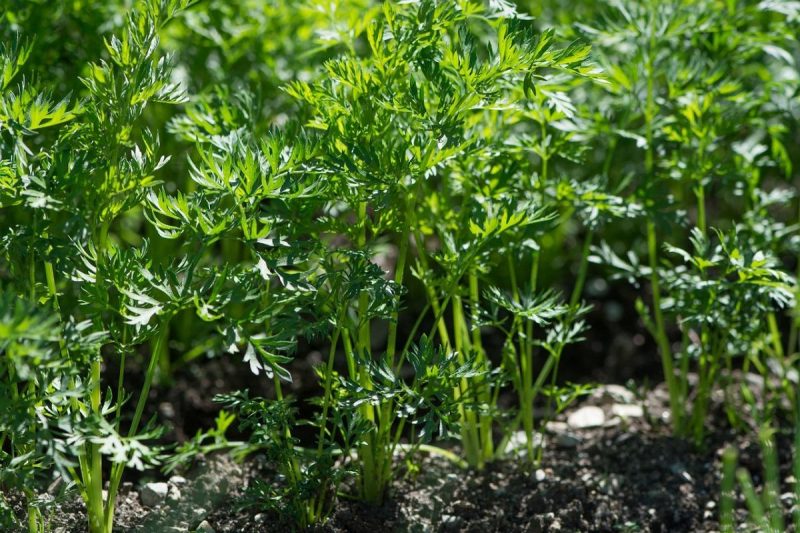
During the growing season, carrots are fed twice (after the second thinning and during the beginning of root growth) using a solution prepared from 400 g of wood ash, 10 g of nitroammophoska, 20 g of potassium nitrate and 15 g of superphosphate per 10 l of water.
Pest and Disease Control
Carrots are susceptible to damage by harmful organisms. Among the diseases, danger is phomosis, bacteriosis, septoria, gray, white, red rot.
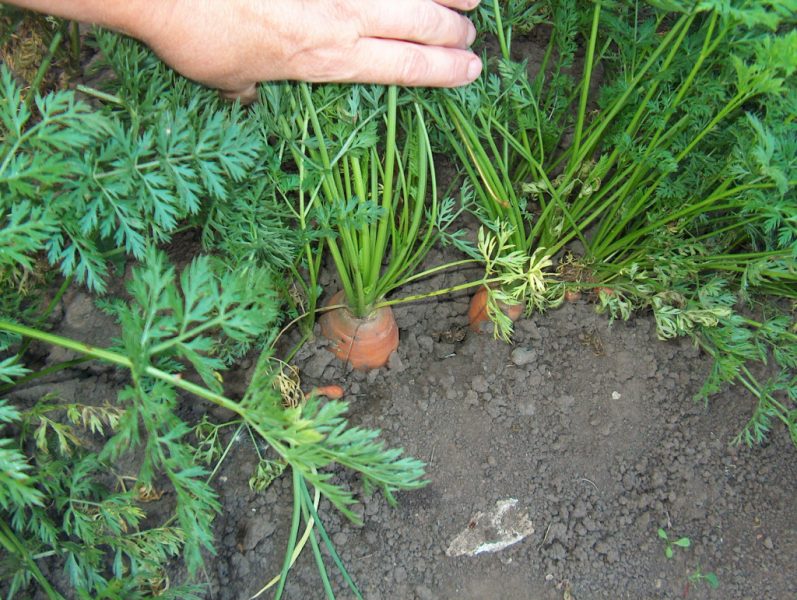
To avoid their development, it is necessary:
- carry out pre-sowing seed treatment, in which pathogens are destroyed;
- limit the application of nitrogen fertilizers that stimulate the development of gray and white rot during storage;
- Do not feed carrots with manure that provokes the development of red rot.
Of the pests on the representative of umbellate, carrot fly, winter scoop, wireworm and slugs are noted, which must be controlled:
- mechanically - in the case of gastropods;
- chemical method.
Carrot flies are hygrophilous, so it’s best to sow in open beds, away from water. She is scared away by chamomile infusions.
Harvesting and storage
Harvesting is carried out in several stages:
- During the second half of summer, root crops are pulled out for food, and early and mid-ripening varieties are also harvested.
- In late September, harvesting of late varieties intended for long-term storage is carried out.

Root crops are harvested on a dry, warm day according to the following scheme:
- Carrots for tops are pulled out of light soil or dug out with a pitchfork in case of heavy soils.
- Extracted vegetables are sorted.
- In healthy root vegetables, the tops are trimmed, after which they are placed under a canopy.
- After several days, the crop is sent for storage.
For storage, boxes are used that are lowered into the basement or cellar, where root crops in containers are sprinkled with sand or sawdust.
The nuances of growing in the suburbs, in Siberia
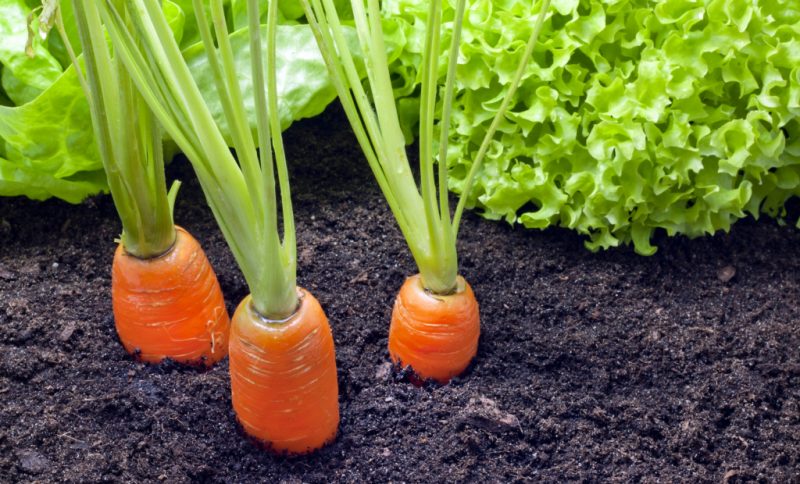
Two main parameters depend on the climatic zone of crop cultivation:
- timing of sowing seeds in open ground;
- variety selection.
In the Moscow region varieties of different ripening periods are grown, and sowing of seeds is carried out from the second half of April until the end of spring, while for Siberia with a colder climate the variety assortment is quite limited and boils down to several mid-season ones - for example, Nantes and Vitamin. The rest of the agricultural technology of cultivation of carrots is no different.
So, knowing the nuances of growing carrots, even a beginner gardener will be able to achieve high rates when harvesting a vitamin vegetable.












